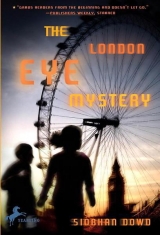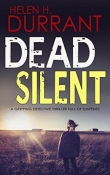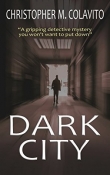
Текст книги "The London Eye Mystery"
Автор книги: Siobhan Dowd
Жанры:
Современная проза
,сообщить о нарушении
Текущая страница: 3 (всего у книги 3 страниц)
Homework
Ted uses the plot of Shakespeare’s
The Tempestin order to find Salim. Ask students to research the plot of The Tempest.
Worksheet 10a
Weather idioms
Any port in a storm
During a crisis, accept all help offered to you
Under the weather
Unwell
Snowed under
Extremely busy
Blow hot and cold
Keep changing your attitude
It never rains but it pours
When something bad happens, other bad things often follow
Chasing rainbows
Trying to get something you will never obtain
Come rain or shine
Whatever happens
Fair weather friend
Someone who doesn’t support you in bad times
Worksheet 10b
Suspense timeline
As the plot of The London Eye Mystery unfolds, the author builds suspense by creating questions in our minds, and giving us clues and hints. On the timeline below, add the events from the novel in the correct order and explain how each adds tension and suspense for the reader.
LESSON 11
Focus:Chapters 38–41
Themes/Character development
Learning outcomes
Students will be able to:
Retrieve and consider ideas from the text about key themes in the story
Infer information from the text about characters and events
Empathize with characters
Engage
Ted, Salim and Marcus all have a hard time with bullying at school. Ted and Salim discuss this before his disappearance, and Marcus refers to it again in his witness testimony. Ask students to list the names that Ted, Salim and Marcus are called at school. For example, Ted is called a ‘neek’ (nerd + geek), while Marcus and Salim ultimately become ‘moshers’. Ask students to consider how this makes the characters in the novel feel. Are they happy being labelled in this way?
Explore
Tell students that one of the themes of the novel is exclusion, or people being cut off from one another. Ask them to reflect on the text, and come up with as many examples of this theme as they can. Write these into a spider diagram on the board.
Students read Chapters 38–41.
Transform
When the class have finished reading the novel, look specifically at Barrington Heights as a symbol of exclusion. This is the tower block that Ted’s father is due to demolish, and in which Salim is located. Hand out WS 11, which has a newspaper article with a history of tower blocks in the UK, as well as views on why they are becoming popular once again.
When they have finished reading, ask students to consider what the advantages might be to building a tower block in a community? What might the disadvantages be? Discuss the issue briefly with students, allowing them to relate their own experiences and impressions. Then, working in pairs, students further discuss the questions, each coming up with three points for and three against building or renovating tower blocks.
Tell students that they are going to hold a mini debate. Then ask them to go to one or other side of the classroom, depending on whether they think building or renovating tower blocks is a good or bad solution to the current housing shortage. As a group, they should then decide on their top five arguments, and present them, one by one. Students can change side at any time. At the end of the debate, the group with the largest number of students in it wins the debate. (Alternatively, this could be structured over more lessons into a much more formal debate, or further researched before the class discussion.)
Review and reflect
Ultimately, Salim decides that the word ‘neek’ has a different meaning. What does this mean to Ted? What does he ultimately conclude about being different? What does Salim (and possibly Marcus) learn?
Homework
Ask students to write a diary entry from Salim’s point of view, when he is stuck in the Barracks. What is he thinking and feeling?
Worksheet 11
Tower blocks
LESSON 12
Focus:Whole novel
Review/Reflect
Learning outcomes
Students will be able to:
Express and share personal responses to the novel orally and in writing
Review their learning
Engage
Ask students to think back to Lesson 1 (they may wish to consult their list of questions from this lesson). Has The London Eye Mysteryturned out to fulfil the expectations they had at the beginning? Have all their questions been answered? Does the novel qualify as a mystery, in the traditional sense of the genre?
As a class, look through the list of rules for detective fiction on OHT 12and decide how many of them Siobhan Dowd has stuck to in her writing. Are there any other rules of detective fiction that aren’t on the list? (They could also look at page 4 of the Reading Guide for ideas on what makes a good mystery.)
Explore
Ask students to think about Ted’s role as detective. What sort of detective is he? How is he unique? Ask them to consider whether they think the London Eye Mystery could have been solved by anyone else. Students can then look at the activity on page 6 of their Reading Guide, which provides the clues Ted uses to solve the mystery, and asks them to discuss how these things help Ted to solve the mystery.
Transform
Inform students that they will be writing a review of The London Eye Mystery. Refer them to page 15 of the Reading Guide, where they will find three short reviews of the book. In pairs, ask them to discuss whether they agree or disagree with these reviews.
They should then write the opening paragraph of their review (they can use the sentence starters on page 15 of the Reading Guide if needed). In this opening paragraph, they will need to:
state the title, author and genre of the book
give a brief outline of the plot
state a brief opinion on whether they enjoyed the novel, which could be developed in later paragraphs
write clearly and informatively, and interest the reader.
Students work independently to write their openings and then swap them with their partners. They should each suggest one improvement to each other’s work.
Review and reflect
Hand out the reading assessment on WS 12. Ask students to think about all the reading strategies they have used during their study of the novel – which reading skills do they feel they have made progress with?
Homework
Students complete their reviews. Effective examples could be posted onto the school website or a book review site.
OHT 12
Rules for detective fiction
The 1920s and 1930s are known as the Golden Age of Detective Fiction. Golden Age mysteries were considered to be games, and generally followed a specific set of ‘rules’, which were written down by Ronald Knox in 1929. How many of these rules does Siobhan Dowd follow in The London Eye Mystery ?
Glossary
Chinaman at the time having a villain of Asian descent had become a predictable feature of popular fiction – the phrase essentially means: ‘Stay away from clichés.’
hitherto until now
intuition gut instinct
supernatural something above and beyond the laws of nature
preternatural something yet unknown, but with a rational explanation
Worksheet 12
Self-assessment sheet
Reading skills and strategies
You practised this when:
I do this
well
I can
do this sometimes
I need to practise this
Understand, describe, select or retrieve information, events or ideas from texts and use quotation and reference to text
You did this when you gathered information about key characters and events as the novel progressed.graph-definition>
You did this when you wrote your review.graph-definition>
Deduce, infer or interpret information, events or ideas from texts
You did this when you used information from the text to solve the mystery.graph-definition>
You did this when you role-played characters.graph-definition>
You did this when you explored how to tell the same story through different media.graph-definition>
Identify and comment on the structure and organization of texts, including grammatical and presentational features at text level
You did this when you looked at how the author built suspense and ordered events in the novel.graph-definition>
You did this when you predicted how the plot would develop.graph-definition>
You did this when you thought about Ted as a narrator.graph-definition>
You did this when you looked at the use of chapter headings as signposts.graph-definition>
Explain and comment on writers’ uses of language, including grammatical and literary features at word and sentence level
You did this when you analysed the writer’s use of metaphor and idioms.graph-definition>
You did this when you worked out the meaning of unfamiliar words using the context and other similar words.graph-definition>
Identify and comment on writers’ purposes and viewpoints and the overall effect of the text on the reader
You did this when you wrote your review.graph-definition>
You did this when you considered the writer’s use of setting. graph-definition>








